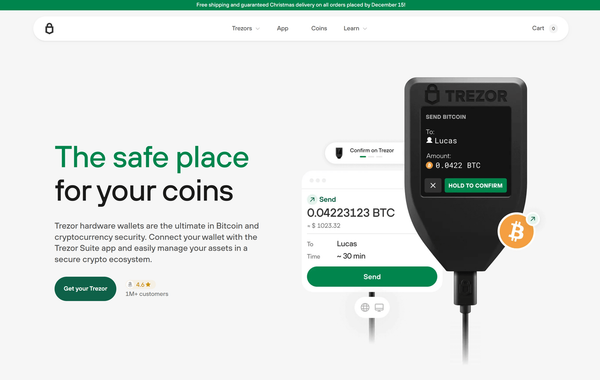Trezor Bridge: A Complete Guide to Secure Crypto Management

In today’s rapidly evolving cryptocurrency ecosystem, security is paramount. Trezor, a pioneering hardware wallet brand, has consistently delivered robust solutions for protecting digital assets. Among its suite of tools, Trezor Bridge plays a crucial role in ensuring seamless and secure interaction between your Trezor device and your computer. This article explores everything you need to know about Trezor Bridge, its installation, functionality, and benefits.
What is Trezor Bridge?
Trezor Bridge is an application developed by SatoshiLabs that enables communication between a Trezor hardware wallet and web-based cryptocurrency applications, such as Trezor Suite or other compatible crypto platforms. Unlike a direct USB connection, Trezor Bridge acts as an intermediary, ensuring secure data transfer while maintaining your private keys offline.
Think of it as a secure “translator” between your Trezor device and your computer. Without Trezor Bridge, most web interfaces cannot detect or communicate effectively with your hardware wallet. This makes it a critical component for managing cryptocurrency securely and efficiently.
Key Features of Trezor Bridge
- Enhanced Security: Trezor Bridge ensures that your private keys never leave your device. All transactions are signed directly on your Trezor hardware, keeping your funds safe from malware or unauthorized access.
- Cross-Platform Compatibility: The application works seamlessly on Windows, macOS, and Linux, enabling a wide range of users to interact with their Trezor wallets.
- User-Friendly Experience: Once installed, Trezor Bridge allows instant recognition of the Trezor device on supported browsers without complicated setups.
- Regular Updates: SatoshiLabs consistently updates Trezor Bridge to maintain compatibility with the latest operating systems and enhance security protocols.
Installing Trezor Bridge
Setting up Trezor Bridge is straightforward, but following each step carefully ensures a smooth experience.
- Download: Visit the official Trezor website at trezor.io/bridge
- to download the latest version compatible with your operating system. Always download directly from Trezor’s official site to avoid malicious copies.
How Trezor Bridge Works
When you connect your Trezor device via USB, Trezor Bridge communicates with your browser and any supported web applications. It creates a secure channel that allows the following actions:
- Transaction Signing: Every cryptocurrency transaction is signed directly on the Trezor device. This ensures private keys remain offline.
- Account Management: You can view balances, receive coins, and manage wallets without exposing sensitive information.
- Firmware Updates: Trezor Bridge facilitates safe firmware upgrades, keeping your device secure with the latest features.
This architecture ensures a high level of security because your private keys never leave the device, even when interacting with potentially insecure networks or applications.
Benefits of Using Trezor Bridge
- Security First: Protects your cryptocurrency from phishing attacks and malware.
- Simplified Device Communication: Eliminates the need for complex driver installations, making Trezor accessible to users of all technical levels.
- Future-Proof: Supports updates to Trezor Suite and other crypto platforms, ensuring long-term usability.
- Improved Compatibility: Works with multiple browsers and operating systems, giving users flexibility.
Common Issues and Troubleshooting
While Trezor Bridge is reliable, users occasionally encounter issues. Common problems include:
- Device Not Detected: Ensure Trezor Bridge is installed correctly, the USB cable is functional, and the device firmware is updated.
- Browser Warnings: Some browsers may initially block Trezor access. Adding an exception or updating the browser usually resolves this.
- Slow Detection: Restarting the computer and reconnecting the device often fixes detection delays.
SatoshiLabs provides extensive support and troubleshooting guides on trezor.io/support
- Install: Run the installer and follow the on-screen instructions. The process may prompt you to allow system permissions, which are necessary for establishing communication between your computer and the hardware wallet.
- Verify: After installation, connect your Trezor device. Trezor Bridge should automatically detect the device, and your browser will prompt you to access it. Once verified, you can manage your assets securely.making it easy to resolve issues quickly.
Conclusion
Trezor Bridge is a vital tool for anyone serious about cryptocurrency security. By bridging your hardware wallet with web applications, it combines the convenience of online management with the unmatched security of offline key storage. Whether you’re a beginner or an experienced crypto trader, installing and using Trezor Bridge ensures your digital assets are managed safely and efficiently.
For more detailed guidance, download the latest version of Trezor Bridge from the official Trezor Bridge page



